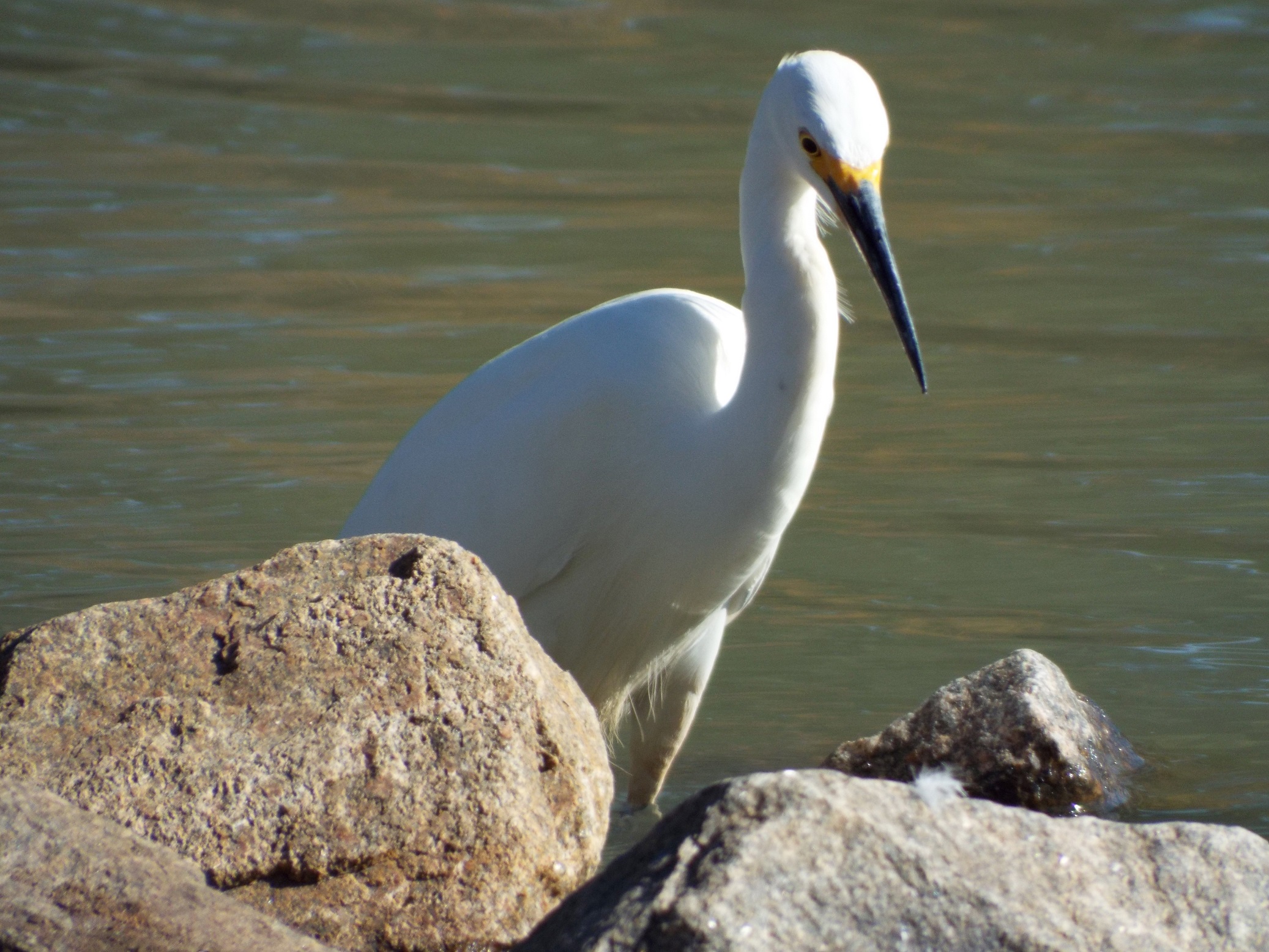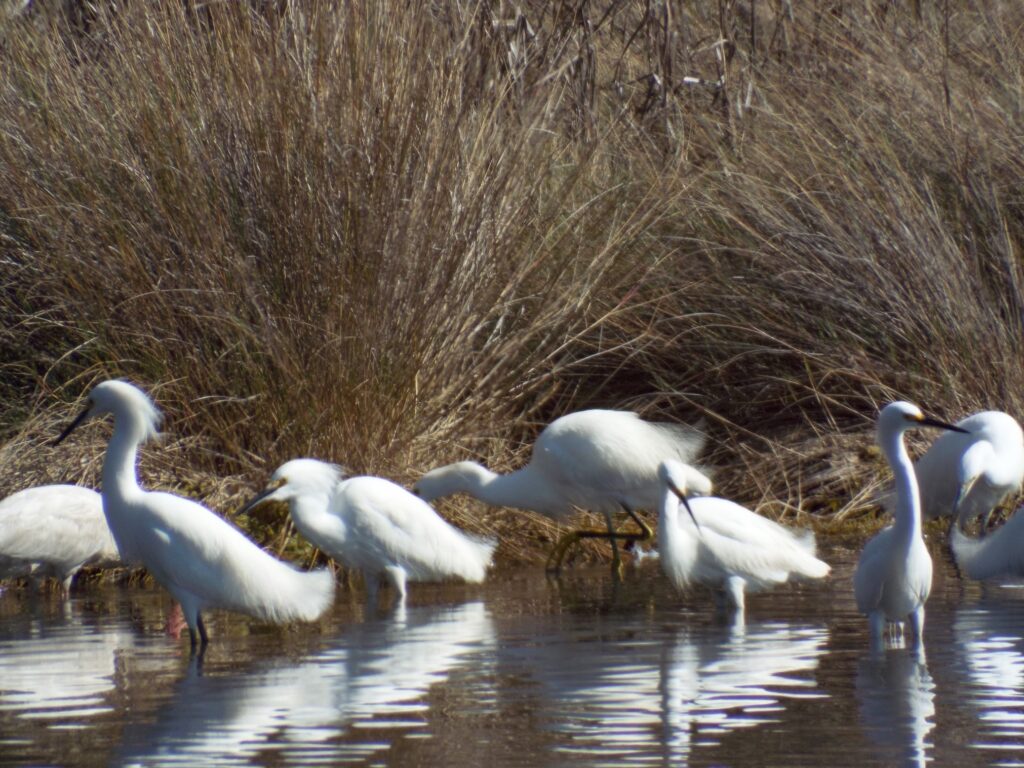




This week for Flora and Fauna Friday we have our intermediate icy-white egret, the Snowy Egret (Egretta thula).
The Snowy Egret is common year-round throughout the coastal plain of the Southern United States and also ventures further inland during the warmer months. Standing at roughly knee height, it’s pretty dead center in the size range of all our Egrets and Herons and has a lankier appearance than most. Their plumage is a uniform snow-white across its whole body but it can easily be differentiated from other white Herons and Egrets by its bill and legs. The Snowy Egret has a black bill with a patch of lemon-yellow skin in front of its equally yellow eyes. It also has black legs that end in bright-yellow feet. Both coloration combinations are unique for our local Egret species. The Snowy Egret is our most common Egret here on Edisto Island throughout much of the year. Like all Egrets and Herons, it’s an ambush hunter and, like most, it hunts fish, crustaceans, amphibians, and aquatic insects. Snowy Egrets are most often spotted patrolling the banks, shallows, lagoons, and marsh edges of our tidal creeks, shifting locations as the tides change. However, they can be found in a wide array of brackish and freshwater systems. Snowy Egrets tend to be more sedentary than some of our other medium-sized Egrets and will often be spotted posting up motionless at the mouths of small gullies, tributaries, and culverts. During spring, their breeding season begins and mature birds will disperse to large multi-species rookeries further inland. Breeding plumage Snowy Egrets will display delicate, long plumes from their back and elongated plume-like feathers from their head and throat. Their feet and eye-patch can also become orangey-pink. The plumes of the Snowy Egret were highly sought after for the millinery trade in the late 1800s, which resulted in huge population declines for the Snowy Egret and many other wading bird species. This severe market hunting pressure and species decline was one of the catalyzing factors for wildlife conservation laws in the early 1900s and resulted in the Migratory Bird Treaty Act, which prohibited the hunting of most of our native bird species and allowed Snowy Egret populations to fully recover to where they are today.